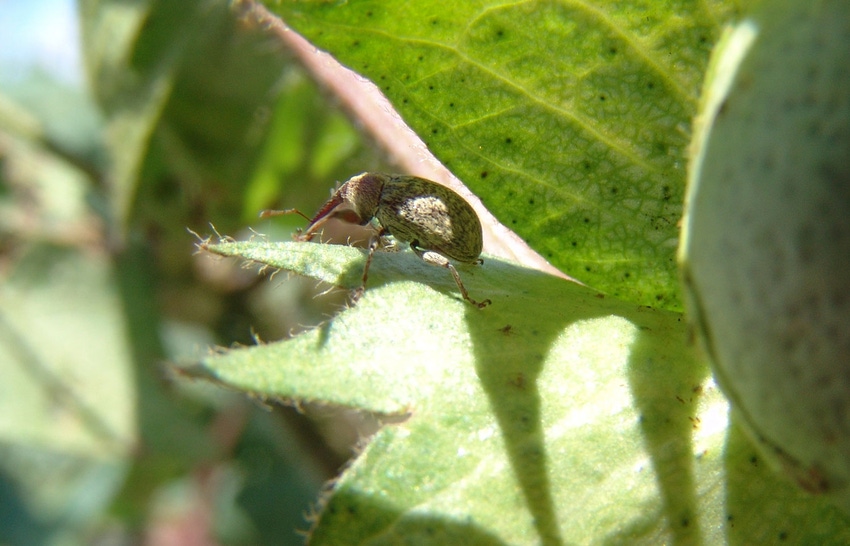
If you remember how it was to grow cotton prior to the successful purge of the notorious boll weevil, you probably have gray hair.
I have gray hair, but let's say I was still pretty young when the Boll Weevil Eradication Program came to our little corner of Georgia in the late 1980s. I knew folks who worked the program in our area then and remember helping set and check those now-classic yellowish-green traps in places. That was when I first learned what a pheromone was.
To be honest, I don't think about the boll weevil much. I bet many cotton farmers today don't give it much thought, either. Those ubiquitous traps are still out there, but you must try to notice them to notice them, or to avoid knocking one down.
But during the Georgia Cotton Commission's annual meeting this year, several presenters put the weevil program back on the radar. And that's a good thing. One presenter was Alan Lowman, who heads up Georgia's boll weevil program. We talked soon after the meeting, and Lowman brought me up to speed on what the Georgia program is now. By the way, the last time a boll weevil was officially trapped in Georgia was 2002. That's another good thing, but let's go farther back. It's good to remember what we already know:
The most destructive pest in U.S. cotton history jumped the Mexican border in the late 19th century. By the 1920s, it had claimed much of the Southern U.S. and King Cotton's throne. What was tens of millions of planted cotton acres dropped to tens of thousands at best.
Chemistry to combat the weevil advanced in the 50s and 60s, but to grow cotton, farmers had to spray more than 20 times during a season. With the successful eradication of the weevil in the 1980s and early 1990s across most of the Cotton Belt, along with the addition of Bt technology to handle other pests, growers dropped insecticide sprays to only 2 to 3 times a season. That's an astonishing accomplishment and shouldn’t be taken for granted for its economic sustainability and environmental benefit.
Though eradicated from most of the Cotton Belt, it's good to remember the boll weevil still lives on planet earth and there is no boll weevil-resistant cotton. Growers in the Lower Rio Grande Valley of Texas still hold the line on the border, where due to location, environment and tough weather, the boll weevil is not yet eradicated.
Growers in that Texas zone as of 2015 are assessed $14 per dryland acre and $28 per irrigated acre to fund their eradication program. Georgia growers as of 2015 are assessed 75 cents per bale for the program, which includes contribution to the National Boll Weevil Protection Fund.
Lowman said with cotton equipment moving from state to state and vehicles visiting non-eradicated areas, there is always a possibility of a boll weevil getting back into Georgia or any other state, and that's why even though eradicated cotton fields must still be trapped and monitored according to teh program's guidelines.
I've gotten more long winded here than intended about the boll weevil, but like I mentioned, it's been awhile since I've given it a hard thought. That said, we can't talk long about the boll weevil eradication program without talking about Marshall Grant. Known to some as 'Mr. Boll Weevil,' the North Carolina farmer spearheaded the establishment of the program in North Carolina in the late 1970s.
When the National Cotton Council backed a full-scale eradication trial, North Carolina was the first location. Grant traveled the state to champion producers to embrace the program and the need for funding. He also was a driving force to establish state programs across the Cotton Belt. He's deservedly received many honors for his leadership since and was inducted into the North Carolina Agricultural Hall of Fame this year.
Lowan said I can jump in the truck with him after Memorial Day this season and go run some traps. It's not often you go trapping for something and hope it isn't around. He also lightheartedly said they run into problems with people knocking down the traps or even shooting them from time to time. He asked me to ask you not to do that. Those traps are like the safety blanket, and, well, if there's a hole in the blanket something might slip through.
Read more about:
Boll WeevilAbout the Author(s)
You May Also Like






